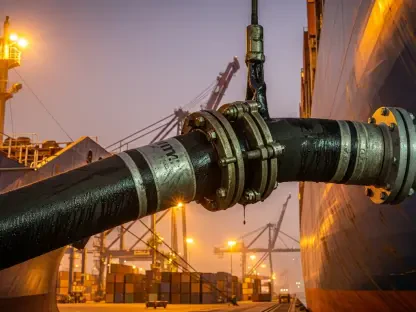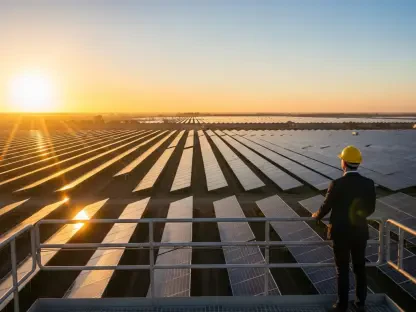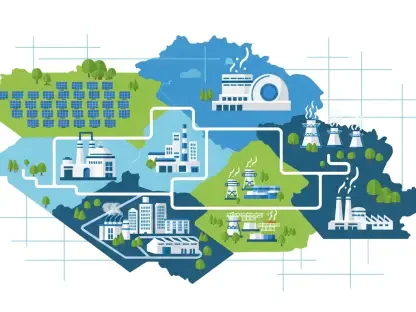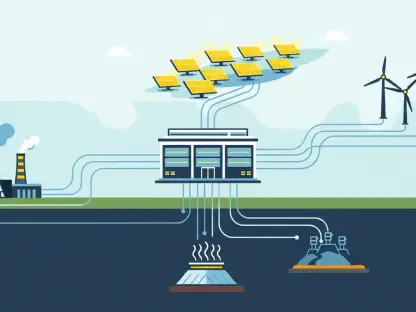The oil and gas industry has seen a significant shift in its exploration and production strategies in recent years. This shift is largely driven by the need for more cost-effective solutions following past economic downturns in oil prices. Companies within the sector are now prioritizing exploration efforts close to existing infrastructures, allowing for optimized spending and faster financial returns. Gone are the days of high-expenditure ventures into uncharted territories; instead, the focus has turned to more conservative, economically efficient strategies that maintain profitability.
Infrastructure-Led Exploration: A Proven Strategy
Smaller Budgets and Shorter Lead Times
One notable trend in the industry’s new approach is its dedication to smaller budgets paired with shorter lead times from discovery to production. This strategy has been particularly effective due to the reduced costs associated with drilling in regions close to existing production infrastructure. Historically, ventures into new, untapped areas required significant financial investments and lengthy periods before seeing returns. Moreover, discoveries in mature regions, despite their smaller size compared to frontier plays like Guyana, present favorable project economics and higher profitability due to lower exploration and development costs.
Companies have increasingly adopted this more practical exploration approach, often referred to as infrastructure-led exploration (ILX). The success rate for ILX wildcat wells over the past five years has been a notable 42%, greatly surpassing the 32% global success rate for exploration. This trend demonstrates the clear financial benefits of focusing exploration efforts in areas with established infrastructure, as it minimizes both operational risks and costs, making it an attractive proposition for stakeholders and investors alike.
Case Studies in Norway and Southeast Asia
The effectiveness of ILX is evident in various regions worldwide, with Norway being a prime example. Here, Equinor has made new discoveries adjacent to the Asgard and Kristin platforms, which already boast developed gas infrastructure. This proximity has facilitated swift development and production ramp-up, showcasing how existing infrastructure can significantly reduce both time and expenses involved in bringing new discoveries to fruition. Additionally, Equinor’s endeavors in the Johan Castberg oilfield highlight the Arctic’s potential for yielding substantial recoverable resources, presenting another case study where leveraging existing infrastructure enhances profitability and accelerates timelines.
Southeast Asia has also emerged as a central player in ILX-focused exploration. For instance, Shell has initiated a new phase of oil production using Malaysia’s existing deepwater infrastructure. This move not only optimizes resource utilization but also exemplifies sustainable practices in oil and gas exploration. Petronas follows a similar strategy, targeting more resources within the moderately developed Malay Basin. The basin, with a historical yield of over nine billion barrels of oil equivalent, benefits significantly from the ILX approach. By focusing on established infrastructure, these companies can sustain production and enhance their financial returns while minimizing environmental impacts and operational risks.
The Shift Towards Sustainability and Efficiency
Adapting to Market Volatility
The oil and gas industry’s shift towards infrastructure-based exploration methods underscores a deep-rooted adaptation to market volatility. By leveraging existing assets, companies can ensure production continuity even amidst fluctuating oil prices. This approach not only stabilizes revenue streams but also provides a buffer against the unpredictability that has historically plagued the industry. This newfound stability allows for more precise financial planning and investment strategies, fostering a more resilient and sustainable business model.
Through these adaptations, oil and gas firms can navigate the complexities of global energy demands more effectively. The focus on cost-efficiency and operational sustainability ensures that companies remain competitive in a rapidly changing market. This shift is essential for maintaining long-term viability and addressing the increasing regulatory and environmental pressures facing the industry. By prioritizing established infrastructural assets, companies can also contribute to reducing their carbon footprint and promoting greener practices within the sector.
Maximizing Asset Utilization in Legacy Fields
The transition towards exploring and developing legacy fields through ILX methods epitomizes efficient resource management. By maximizing the utilization of existing assets, oil and gas companies can extend the lifespan of mature fields, extracting additional value from these investments. This strategy not only enhances overall production but also mitigates the need for new, more invasive exploration projects that can carry higher environmental and financial risks.
Additionally, this approach aligns with broader industry goals of improving operational efficiency and minimizing environmental impact. As companies increasingly focus on sustainability, the emphasis on reusing and repurposing existing infrastructure becomes a critical component of their strategic planning. This method ensures that resources are exploited to their fullest potential, reducing waste and promoting a more environmentally conscious approach to oil and gas extraction.
Conclusion: Future Considerations and Strategies
The oil and gas industry has undergone a notable transformation in its exploration and production tactics in recent years. This change is mainly prompted by the need for more budget-conscious approaches following past fluctuations and economic downturns in oil prices. Companies within the industry are now emphasizing exploration efforts near existing infrastructures. This strategy allows for optimized expenditure and quicker financial returns. The era of high-cost ventures into unknown territories has ended; now, the emphasis has shifted to more conservative and economically efficient strategies that ensure ongoing profitability. In essence, the current trend involves leveraging existing assets to maintain financial stability and reduce risks associated with unpredictable market conditions. This approach not only aligns with cost-saving measures but also highlights a strategic pivot to maintaining sustainability in a volatile market. The industry is increasingly focused on minimizing expenditures while maximizing returns, ensuring that resources are utilized effectively for continued success in the competitive global landscape.









